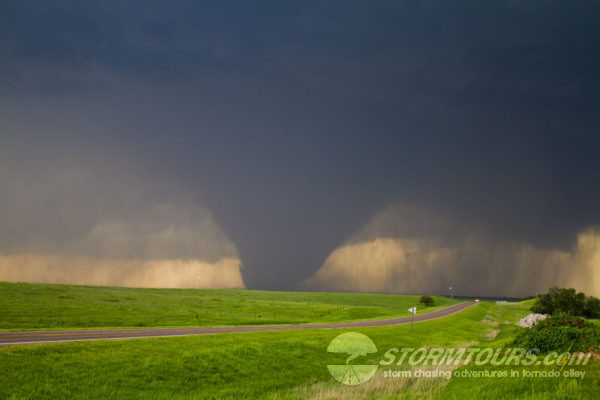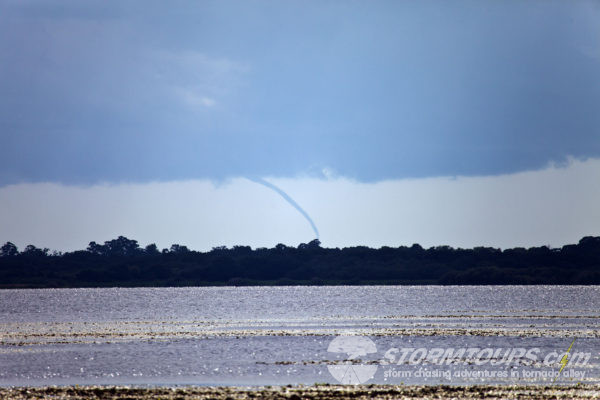5. You can see an approaching tornado.
There are many reasons why you may not be able to see an approaching tornado. The most common reason is that the tornado has become “rain-wrapped.” This happens when the precipitation area of the thunderstorm is pulled around the updraft base by the rear flank downdraft (RFD). We have been in many situations where our storm chasing tours were located within a mile of a tornado, and yet, we had no visible sign of the tornado itself. If you’re not a trained weather spotter, this can be a cocktail for a volatile and deadly situation.

It is best to heed all warnings during severe weather. Pay close attention to local television news sources as well as broadcast by the National Weather Service. If you’re told there is a tornado, or a tornado “could be” on the ground, then assume it is there and take action as needed to protect your life.
6. Tornadoes do not cross bodies of water, thus a river or a lake will protect me.
Simply put – tornadoes over water are called waterspouts. There are two basic types of waterspouts, those that are associated with a mesocyclone and those that are not. Those that are, are the same type of tornado that forms from supercell thunderstorms. A body of water such as a river or lake will not protect your home. The tornado will simply just cross it and just become a “tornado over water” or a “waterspout” until it reaches land again.

Non-mesocyclonic waterspouts are typically weaker than their counterparts associated with a mesocyclone. However, some have produced significate damage once coming ashore. If you’re near the water and a Severe Thunderstorm Warning, Special Marine Warning or a Tornado Warning issued, take immediate precautions.
